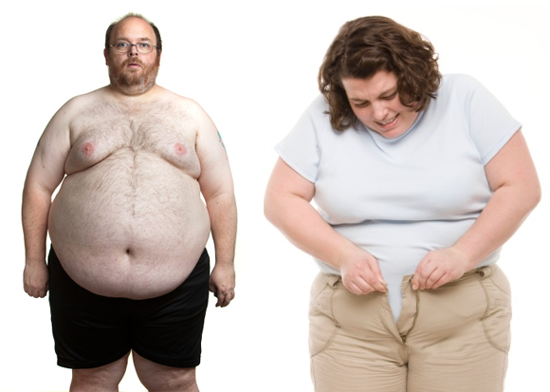“Obese Not !” is the mantra in focus; 21st century where zero-figure is the style mania and obesity is the disease of infinity, an introspection on this point is needed.
The seers of Ayurveda have cited in a text - Caraka Samhita, (which is more than 2000 years old) that Sthoulya (Obesity) is the most undesirable constitution. They have mentioned of the cause, the management and prognosis in such a beautiful manner, that it even holds true and effective; a perspective of it is being presented.
Before exploring the holistic views, we look up to our modern knowledge. Obesity is mainly a sedentary life-style disorder which is the cause for many other diseases. Obesity occurs when energy intake exceeds the energy output over a sufficiently long period of time. The modern food habit and easy-go ways have multiplied the occurrence of obesity. The management with modern drugs and surgical intervention is not found to be very successful. The genetic component is considered as the prime cause. But then, environmental influences are believed to be more important in resulting obesity.
The Ayurvedic perspective puts up a striking cause of obesity, which even modern research agrees. With regards to management, three golden ways are –
1. Proper food & lifestyle,
2. Exercise (Yogasana-Pranayam),
3. Medicinal management & therapies.
Beside, it is to be understood the condition, i.e. state of disease determines success of therapy. The full-blown obesity is a difficult to manage condition. In obesity with little or less complication, patient willingness to stick to proper diet & regimen with medicines, the holistic approach surely is a hope and assurance.
Causes of obesity:
Tad atti sthoulyam: ati sampurnad,
guru-madhur-shita-snigdha-upyogat,
avyamat, avyaya, diwaswapna, harsha-nityad,
achintanat, beej swabhav upjyate.
- (Caraka Samhita, Sutra 21/04)
(Voracious feeding, intaking of diets having qualities of heavy, sweet, cold, oily in excess; devoiding of physical activities – exercises, abstinence of sexual activity, day-sleep, uninterrupted cheerfulness, being free of worry, and familial association are the causes of obesity)
Pathogenesis:
By the causative factors, the kapha dosa and meda dhatu (fat tissues) increases. The vata dosa agitates the digestive-fire and makes the person more hungry, for further intake of food. In turn the meda keeps increasing and the formation of successive dhatus is disturbed. The excess fat accumulates in the cheeks, buttocks, abdomen and breast and makes the person disproportionate in size and shape.
Symptoms:
Excessive hunger, thirst, sweating, difficulty in breathing on exertion, lassitude, hoarseness of voice, increase of adipose tissue are the symptoms. Those who are obese become slow, weak in sexual act and have less lifespan. Obesity becomes the predisposing factor for many diseases.
Treatment:
Principle of management is using bulk drugs with no or less nutritional value along with therapies and proper regimen.
The medicinal management in Ayurveda offers ample of choices. As such treatment in Ayurveda is on the basis of state of dosa and is individual specific. The view of physician is needed. Certain example of drugs and therapy is put up, the readers should follow supervision of Ayurveda experts for ‘obese-not’.
Therapies:
- Udvartana (Dry massage with herbal powders in upward direction), Svedana, Vasti-karma (ruksa-tikshna; lekhana), Langhana, etc.
- Single Herbs: Shudda guggulu (Commiphora wighti/mukul) is an effective lipid regulator, Vrikshamla (Garcinia indica) reduces lipogenesis and increases lipolysis.
- Compound formulation: Navaka (Medohara) guggulu, Triphala churna, Mahamanjisthadi kashyam, Takrarishtam, Medohar-vidangadi lauha, Arogyawardhini vati, Chandraprabha vati, etc.
Home Remedies:
Taking 1 glass of luke-warm water with ½ lemon juice and mix 1 teaspoon honey - Drink at morning (empty stomach).
Food & Lifestyle management.
Diet & Regimen Chart for Obesity
- Wake up early in the morning. Drink 3-4 glasses of water.
- After a brisk walk. Go to toilet. Do not strain.
- Exercise till exertion. Take inbetween rest with savasana. Pranayama (Kapal bharti), Surya Namashkar, trikonasana, vajrasana, bhujangasana, sarvangasana, etc.
- Have aloe-vera juice/shattu-sarbat.
- Have a light breakfast, easy to digest lunch and simple dinner.
Foods (Do include/Prefer)
- Fruits: Pomegranate, amlaki, moshambi, papaya, water-melon, cucumber;
- Vegetables: Green vegetables, karela, sahjina data, parwal;
- Cereals & Pulses: Mudga dal, masura, canaka, daliya, sooji, jowar roti, old rice;
- Spice, etc.: Garlic, turmeric, soonthi, mustak, honey, butter-milk;
X Foods (Avoid/Reduce)
Fatty foods (butter), spicy-fried foods, junk items, canned foods, fermented items, maida-besan items (biscuits), heavy foods, cold-drinks, alcohol and all incompatible food combinations.
To reduce:
- Fruits: Banana, mango, custard-apple;
- Vegetables: Potato, brinjal, green-pea;
- Cereals & Pules: Arhar, urad, moth, rajma, chola;
- Other: Curd, milk-sweets, papad, pickles;
- Food dishes: Aloo paratha, puri, pakori, Biryani, meat;
Regimen (Follow)
Have a proper routine throughout the day, i.e. an active life-style, short walk after food, morning and evening walk, swimming, late sleep and early waking up.
X Regimen (Avoid)
Avoid day-sleep, too much of sleep, lethargy, potato-couch, untimely foods, excessive intake of food, eating food in hurry, having lots of water after taking food;
Aim: To reduce the dosa Kapha-Vatta and meda vitiating conditions for restoring normalcy.
May you be healthy and Happy!
Image (c) Gettyimages.com
